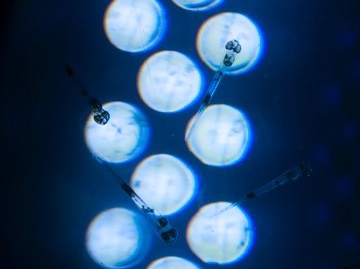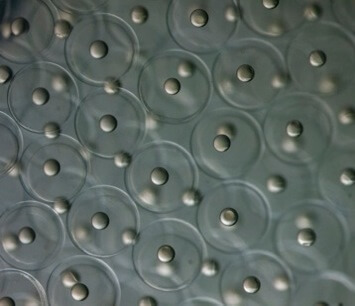The study, which attempts to find a solution to a 100-year-old scientific mystery, was recently published in the journal PNAS

A new study from Tel Aviv University offers an explanation for the high mortality of most sea and reef fish in the first days of their lives.
The study was conducted by research student Victor Kina and Dr. Roy Holtzman from the Department of Zoology in the Faculty of Life Sciences of Tel Aviv University and the Inter-University Institute for Marine Research in Eilat, and its results were recently published in the journal PNAS.
"Most of the fish we know lay eggs," explains Dr. Holtzman. "The female lays a huge amount of eggs - between thousands and millions. These eggs drift into the open sea, and from them hatch into tiny hatchlings, which have to fend for themselves."
Already a century ago, a Norwegian researcher named John Hurt discovered that most larvae die within a few days of hatching. Hort called this period of mortality the "critical period": 99% percent of larvae in nature, and 80% of larvae that hatch in agricultural tanks, will die within two weeks. Since Hort's discovery, various theories have been proposed trying to explain this death rate. There were researchers who attributed the mortality to the low food density in the open sea, and there were others who attributed me to extreme predation rates - but to date no convincing evidence has been presented for either theory.

In the new study, the researchers focused specifically on the physical environment of the larvae. "Similar to the adult fish," says Dr. Holtzman, "the larvae also hunt by rapidly expanding the mouth cavity, which creates suction currents that draw the food into the mouth. However, unlike the adult fish, the tiny larvae feel the water as a viscous liquid. When a body moves in a liquid, weak electrical connections are formed between the liquid and the body, and therefore the body drags behind it a thin layer of the liquid, the thickness of which varies according to the viscosity of the liquid in a liquid such as water, it is only a matter of millimeter particles - a negligible layer for a large fish, but quite burdensome for the tiny larva. Physically, the sativas seem to swim in a viscous medium like honey. And drawing honey from a straw is not an easy task at all."
To test the suction skills of the larvae, Dr. Holtzman and his colleague placed them in petri dishes with single-celled organisms that serve as their food. Half an hour later, the single-celled remains were counted in the stomach of each larva. This experiment was repeated at intervals of two days, and it turned out that the bigger the larva grew, the more it managed to eat.
To observe the performance with their own eyes, the researchers developed a unique tracking method. "We developed a sophisticated camera system, which photographs the fry at a speed of 1,000 images per second. When we looked at the pictures, we found that five-day-old ewes repeatedly try to capture food, but only succeed once in every seven or eight attempts. 21-day-old fry, on the other hand, reach an 80% success rate."

Using advanced simulation software, the researchers created a simulation of the flow of water into the mouth of the food fish. "We discovered that the flow profile of the water into the mouth of a millimeter-sized fish is very different from the flow profile into the mouth of a centimeter-sized fish," says Dr. Holtzman. "Hydrodynamic calculations showed that the suction power of the larva is significantly less than that of the adult minnow. These hydrodynamic processes are of crucial importance in the ability of the species to survive."
To strengthen their findings, the researchers added a substance that increases the viscosity of water to a tank that contained mature fry, and tested their eating performance under the new conditions. They found that 21-day-old fingerlings, which were already able to eat well in normal water, regressed back to their performance when they were weaned young and tiny. "In conditions of high water viscosity, the minnows are slower and less efficient. Many times they open their mouths but fail to create a strong enough current to suck the prey in. There is no doubt that this is a very frustrating situation for the young fish, who are dying of starvation, and also for the marine farmers, who are suffering huge economic losses", concludes Dr. Holtzman. "It is possible that in the future we will be able to develop types of food or water treatments that will reduce the phenomenon, and allow a higher percentage of the saffron to reach maturity."
